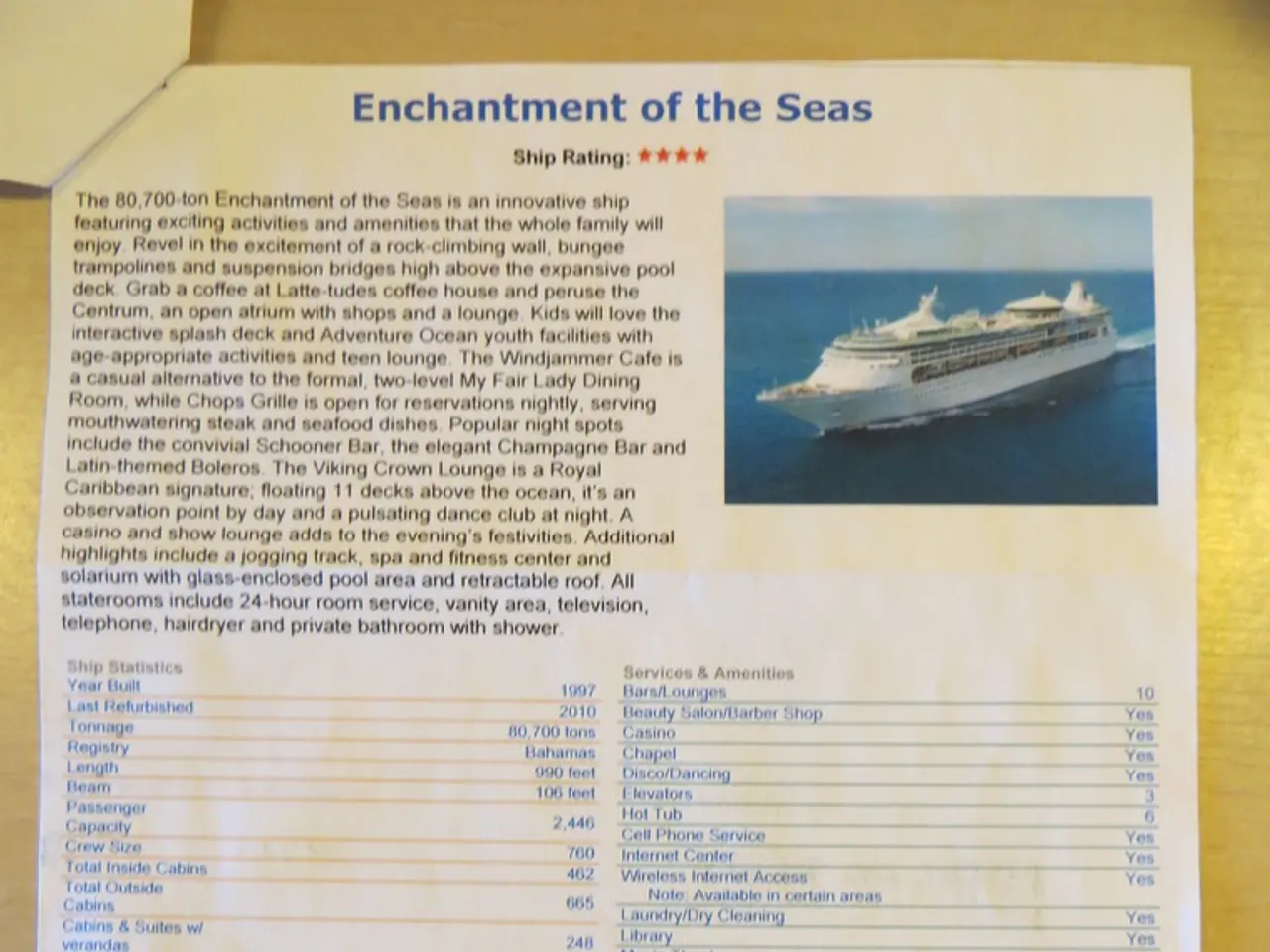Navigational Charts from Kirke Channel's 1982 to 2019 Editions: An Overview of Upgrades
In the picturesque city of Puerto Natales, nestled at the end of the Kirke Canal, a significant update to a nautical chart has been made to ensure safer navigation for the half a million tourists who visit each year.
The Chilean Hydrographic and Oceanographic Service (SHOA) published a new edition of the SHOA Nautical Chart No. 10641, "Canal y Angostura Kirke," in 2019. This update improves upon the previous version, first published in 1982.
The Kirke Channel, a hydrographically complex area with bathymetric constrictions and tides and currents that vary considerably, now benefits from more objective and accurate Sailing Directions. Studies and analyses were conducted to gather this improved information, and the new chart reflects these updates.
The new edition covers a larger area and includes anchorages at each end of the chart. It also provides more reliable tidal and current forecasts, thanks to data from over 15 sensors installed in the last five years.
One of the key improvements is the inclusion of seabed classification information, which was not present in the 1982 edition. This information was obtained using a dredger in all recommended anchorages.
Moreover, a horizontal acoustic doppler current meter (HADCP) was installed, providing real-time current direction and intensity to vessels. This data is crucial for navigating the Kirke Channel safely and efficiently.
The Kirke Canal, spanning about 5 nautical miles with a WSW-ENE orientation and an average width of 0.3 cables, leads to the Valdés channel and, ultimately, Puerto Natales. The Kirke Narrow, located at the ENE end of the Kirke Canal, serves as the gateway to this scenic destination.
For the most accurate and current information, mariners are advised to check SHOA’s official website or contact SHOA directly. The organization regularly issues Notices to Mariners and new chart editions or corrections. These provide incremental updates after the last chart edition, and the exact current edition number and publication date for Chart 10641 will show the most recent update.
While the new edition does not have an electronic version, the first edition of the Electronic Navigational Chart (ENC) was drawn up from the data used in the 9th edition.
Finally, a weather station and a current meter were permanently installed at the southern tip of Merino Island, providing real-time information for users. This includes current direction and intensity, ensuring that mariners can make informed decisions when navigating the Kirke Channel.
In conclusion, the updates to SHOA Chart No. 10641 aim to enhance safety and efficiency in the Kirke Channel, benefiting both locals and tourists alike.
- The scientific study and analysis conducted for the update of SHOA Nautical Chart No. 10641 involve harnessing data from climate-change, environmental-science, and data-and-cloud-computing to gather improved information.
- The use of technology, such as a horizontal acoustic doppler current meter (HADCP), provides real-time current direction and intensity to vessels navigating the Kirke Channel, contributing to the overall objective of enhancing safety and efficiency.
- The Kirke Canal update can also be attributed to advancements in science, particularly hydrographic survey, with the inclusion of seabed classification information, which was not present in the earlier editions.




